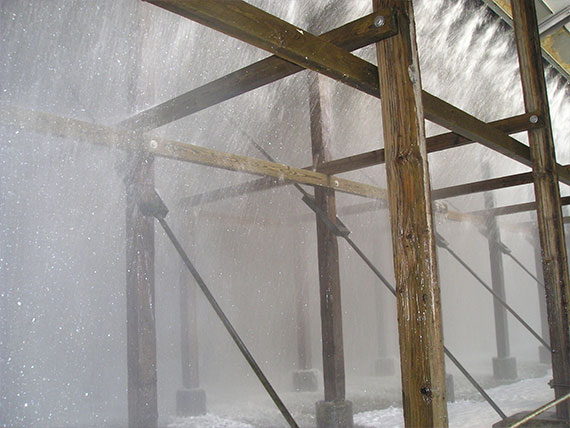Durability of different wood types
The standard EN 350-2 "Natural durability of solid wood" lists the natural durability of selected wood species of importance in Europe against wood-destroying fungi, drywood-destroying beetles, termites and wood pests in sea water.
Natural durability against wood-destroying fungi is categorised in five durability classes:
| Durability class 1 | highly durable |
| Durability class 2 | durable |
| Durability class 3 | moderately durable |
| Durability class 4 | slightly durable |
| Durability class 5 | non-durable |
The durability classes of the most important coniferous and deciduous wood types are listed as follows:
| Wood type (conifer) | Heartwood | Sapwood |
| Fir (Abies alba) | 4 | 5 |
| Larch (Larix spp.) | 3 – 4 | 5 |
| Spruce (Picea abies) | 4 | 5 |
| Sitka spruce (Picea sitchensis) | 4 – 5 | 5 |
| Pine (Pinus sylvestris) | 3 – 4 | 5 |
| Douglas pine (Pseudotsuga menziesii) – North America – cultivated in Europe | 3 3 – 4 | 5 5 |
| Western Red Cedar (Thuja Plicata) – North America – cultivated in GB | 2 3 | 5 5 |
| Wood type (ceciduous) | Heartwood | Sapwood |
| Beech (Fagus sylvatica) | 5 | 5 |
| Northern red oak (Quercus rubra) – North America | 4 | 5 |
| White oak (Quercus alba) – North America | 2 – 3 | 5 |
| English oak, sessile oak (Quercus rubur, Quercus petraea) – Europe | 2 | 5 |
| Turkey oak (Quercus zerris) – Europe | 3 | 5 |
| Black locust (Robinia pseudoacacia) – North America – Europe | 1 – 2 1 – 2 | 5 5 |
